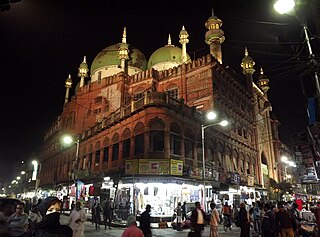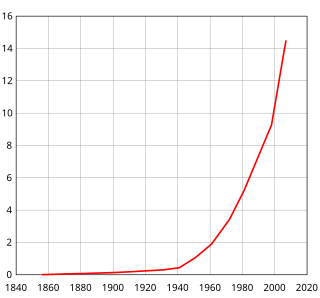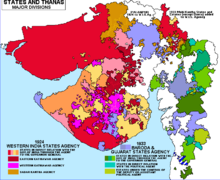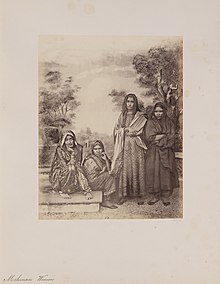
Kutchi or Kachhi is an Indo-Aryan language spoken in the Kutch region of India and Sindh region of Pakistan.

The Khoja are a mainly Nizari Isma'ili Shia community of people from the western Indian subcontinent. Khojas predominantly reside in India, Pakistan and eastern Africa.
Bhatia is a group of people and a caste found in Punjab, Sindh and Gujarat. Traditionally, they have been a trading and merchant community. The Bhatias primarily live in Northwestern India and Pakistan. The Bhatias, Lohanas and Khatris were similar communities and were known to intermarry. The Bhatias recruit Saraswat Brahmins as priests.

Islam is the third largest religion in Sri Lanka, with about 9.7 percent of the total population following the religion. About 1.9 million Sri Lankans adhere to Islam as per the Sri Lanka census of 2012. The majority of Muslims in Sri Lanka are concentrated in the Eastern Province of the island. Other areas containing significant Muslim minorities include the Western, Northwestern, North Central, Central and Sabaragamuwa provinces. Muslims form a large segment of the urban population of Sri Lanka and are mostly concentrated in major cities and large towns in Sri Lanka, like Colombo. Most Sri Lankan Muslims primarily speak Tamil, though it is not uncommon for Sri Lankan Muslims to be fluent in Sinhalese. The Sri Lankan Malays speak the Sri Lankan Malay creole language in addition to Sinhalese and Tamil.

Memoni is an Indo-Aryan language spoken by Kathiawari Memons, from the Kathiawar region of Gujarat, India. Memon from Okha Port, Kutch and some other communities from Kathiawad also use Memoni at their homes.
Lohana are a trading or mercantile jāti mostly in India and also in Pakistan.
Kutchi Memons are an ethnic group or caste from Kutch in Gujarat, India, who speak the Kutchi language. They are related to the Memons associated with the historic state of Kathiawar, a Muslim community of Pakistan and India, who speak the Memoni language. Transliteration of name of this Memon community has now been standardized. Hence popular usage is Cutchi and Kutchi.

The official religion of Pakistan is Islam, as enshrined by Article 2 of the Constitution, and is practised by approximately 96.47% of the country's population. The remaining 3.53% practice Hinduism, Christianity, Ahmadiyya Islam, Sikhism and other religions.
The Kutchi people traditionally hail from the Kutch district of the western Indian state of Gujarat and the Sindh region of Pakistan.
The Gujarati people, or Gujaratis, are an Indian ethnolinguistic group who reside in or can trace their ancestry or heritage to a region of the Indian subcontinent primarily centered in the present-day western Indian state of Gujarat. They primarily speak Gujarati, an Indian language. While Gujaratis mainly inhabit Gujarat, they have a diaspora worldwide. Gujaratis in India and the diaspora are prominent entrepreneurs and industrialists and maintain high social capital. Many notable independence activists were Gujarati, including Mahatma Gandhi and Vallabhbhai Patel.
Sunni Vohras or Sunni Bohras, are a community from the state of Gujarat in India. Sharing the same name as the Dawoodi Bohras, they are often confused with that community. A few families use the slightly different spelling of "Vora" or "Vahora" as their surname. Another common surname is Patel.
The term Gujarati Muslim is usually used to signify an Indian Muslim from the state of Gujarat in western coast of India. Most Gujarati Muslims have the Gujarati language as their mother tongue, but some communities have Urdu as their mother tongue. The majority of Gujarati Muslims are Sunni, with a minority of Shi'ite groups.
Dhoraji Colony is a neighbourhood in Gulshan-e-Iqbal Town, Karachi, Sindh, Pakistan, which is located between UC-1 and UC-2. The demarcation separating the two Union Councils runs from the National Stadium Road, towards Selani Chowk, past ZVMG Rangoonwala Community Centre via Siraj-ud-Daula road.

The Nakhoda Musjid is the principal mosque of Kolkata, India, in the Chitpur area of the Burrabazar business district in Central Kolkata, at the intersection of Zakaria Street and Rabindra Sarani.

Muhammad Ilyas Attar Qadri (Urdu: محمد الیاس عطار قادری, romanized: Muḥammad Ilyās ʿAṭṭār Qādrī; born 1950), known reverentially by his followers as Allama Azim, is a Pakistani Islamic scholar and the founder of Dawat-e-Islami. He belongs to the Qadri order of Sufism.
The ethnic groups in Karachi includes all the ethnic groups in Pakistan. Karachi's inhabitants, locally known as Karachiwala, are composed of ethno-linguistic groups from all parts of Pakistan, as well as migrants from South Asia, making the city's population a diverse melting pot. At the end of the 19th century, the population of the city was about 105,000, with a gradual increase over the next few decades, reaching more than 400,000 on the eve of independence. Estimates of the population range from 15 to 18 million, of which an estimated 30% are migrants from different backgrounds. The city's population is estimated to be growing at about 5% per year, including an estimated 45,000 migrant workers coming to the city every month from different parts of Pakistan.

Karachi is the largest and most populous city in Pakistan. The population of Karachi is estimated to be around 16 million (16,093,786) in 2020. The population and demographic distribution in the megacity has undergone numerous changes over the past 150 years. On 14 August 1947, when it became the capital city of Pakistan, its population was about 450,000 inhabitants However, the population rapidly grew with large influx of Muslim refugees after independence in 1947. By 1951, the city population had crossed one million mark. in the following decade, the rate of growth of Karachi was over 80 percent. Today, the city has grown 60 times its size in 1947 when it became the country's first capital. Although, Islamabad remains the nation's capital since the 1960s, the city's population continues to grow at about 5% per annum, largely thanks to its strong economic base.

Kharadar is a neighbourhood in District South of Karachi, Pakistan. Kharadar and the adjacent communities of Mithadar and Jodia Bazaar together form what is regarded as the original core of Karachi.

The demographic history of Karachi of Sindh, Pakistan. The city of Karachi grew from a small fishing village to a megacity in the last 175 years.













